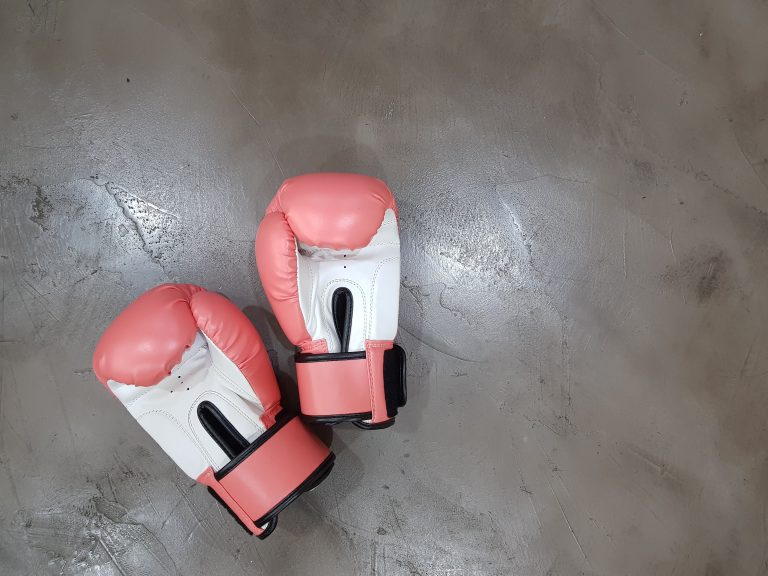What Karate Belts Are There?
Karate is a form of martial arts that originated in Japan. It is a discipline that aims to develop the practitioner’s physical and mental strength through training and practice. Karate belts represent a practitioner’s rank and skill level. The color of the belt increases as the rank and skill level of the practitioner advances. In this blog post, we will explore the different karate belts that exist today.
The White belt
The white belt is the first belt that a beginner karate student will receive. It symbolizes purity, innocence, and the beginning of a journey. In Karate, it means that the student is a beginner and has not yet achieved any rank. The white belt is the foundation upon which the student will build skills and advance through the ranks.
The Yellow belt
After the white belt, the yellow belt is the next rank that a student will achieve. This symbolizes the first stage of progress. The yellow belt indicates that the practitioner has begun to understand the basic principles of karate and is developing the necessary skills. It represents the first step towards proficiency in Karate.
The Orange belt
The orange belt represents the second stage of progress after the yellow belt. It shows that the student has improved their skills and knowledge in Karate. The orange belt student has demonstrated proficiency in the basics of Karate and can perform the techniques with more precision and effectiveness.
The Green belt
The green belt is the third major rank in karate progression. It symbolizes growth and represents the student’s increasing understanding and mastery of Karate. The green belt is a significant milestone in the student’s journey, demonstrating that they have achieved a higher level of proficiency and skill.
The Blue belt
After the green belt comes the blue belt. It represents the step towards advanced training in Karate. The blue belt student has achieved an advanced level of proficiency and has demonstrated the ability to apply their techniques in real-life situations.
The Purple belt
The purple belt is a highly respected rank that requires a lot of dedication and hard work to achieve. It represents the student’s mastery of the basic techniques and principles of Karate. The purple belt indicates that the student is now approaching the level of expertise and can begin to explore the more advanced aspects of Karate.
The Brown belt
The Brown belt represents a very advanced level of Karate expertise. It denotes that the student has attained a high level of proficiency and technical knowledge in Karate. It is the precursor to the Black belt and represents the student’s last steps towards achieving the highest level of accomplishment.
The Black belt
The coveted Black belt is the highest level of mastery in Karate. It symbolizes the student’s complete understanding of Karate, both technically and philosophically. It requires a lot of hard work, dedication, and commitment to achieving this rank. A Black Belt holder has demonstrated mastery of Karate, can apply its principles to life outside the dojo, and is considered an excellent martial artist.
What Karate Belts are There?
Introduction
Karate is a highly practiced martial art that originated in Japan. As with a majority of martial art disciplines, the karate grading system is based on a series of colored belts that indicate one’s level of proficiency. Karate belts not only signify a student’s level of skill, but they also act as a motivation and recognition of achievement.
Karate is highly respected because of its discipline, skill, and elegance. There are many questions surrounding karate belts, and in this blog post, we will cover some of the most frequently asked questions to help demystify the system.
What is the Meaning of Karate Belts?
The process of earning a black belt in karate is highly respected and highly sought after. However, before one can attain the highly acclaimed black belt, it is necessary to understand the different karate belts in the ranking system.
Karate belts are representative of the owner’s skill level and their time spent studying the art. Each ranking is shown by a different colored belt. Traditionally, karate only used four belts, where white represented beginners, brown belts were seen as intermediates, and black indicated mastery. However, most modern-day dojos practice a more varied system that allows for greater recognition of progress.
What Are The Different Karate Belts?
There are many belts in karate, and they are organized into kyu – ranks for beginners and dan – ranks for advanced students, with dan ranks being the high-prestige black belt. Below is a list of some of the most popular colors recognized in the belt system:
White Belt
The white belt is the first belt a student can receive, which represents a beginner’s stage. A white belt holder may not have any karate experience or might be in the early stages of receiving training.
Yellow Belt
The yellow belt represents the second stage in a beginner’s journey. Yellow belts are expected to have a basic understanding of karate and to move towards upping their skills to a ‘next-level.’
Orange Belt
The orange belt represents the stage where the karateka has transitioned from a beginner to an advanced learner. Orange belt holders should have an understanding of basic karate moves generated through observations and proper hand and foot movements.
Green Belt
The green belt is the high intermediate rank that represents students who are improving and have made progress. Green belt holders have demonstrated that they can demonstrate various techniques with little or no errors.
Blue Belt
The blue belt represents a highly advanced student that has been practicing karate for at least two years. The blue belt holder has displayed an excellent understanding of karate techniques and has appropriately integrated those techniques into sparring.
Purple Belt
The purple belt is the high intermediate rank that represents students who are highly skilled and have a deeper understanding of karate techniques. Purple belt holders not only display excellent technical skills but also an understanding of situational awareness during sparring.
Brown Belt
The brown belt holder is at a highly advanced level in karate. They have spent many years working hard to refine their techniques and have shown mastery.
Black Belt
A black belt is an advanced level karate belt rank that shows the holder has attained a high level of mastery in the art of karate. A black belt takes several years of hard work to achieve, and it is significant to attain because it represents the holder’s dedication, skill, and mastery of the martial art.
Introduction:
Karate is one of the most popular martial arts which originated in Okinawa, Japan. It is a dynamic sport that emphasizes striking, grappling, and throws. One of the most intriguing aspects of Karate is the colored belts system which represents a student’s level of skill and experience. In this guide, we will explore the various belts and the requirements to achieve them.
The White Belt:
The white belt is the beginner level and represents purity and innocence. It is the first step towards becoming a Martial Arts expert. At this level, the student is expected to learn the basics of Karate, proper body movement, stance, and breathing techniques.
The Yellow Belt:
The Yellow belt is the second level and represents the earth. At this stage, the student has mastered some of the basic techniques and is now ready to learn more advanced skills, such as sparring and breaking. The requirements for achieving the Yellow belt include a set of kicking and striking techniques, a basic form, and demonstrating the ability to break boards.
The Orange Belt:
The Orange belt is the third level and represents the sunrise. At this level, students have improved their techniques and have demonstrated more excellent confidence in their abilities. The requirements for achieving the Orange belt include learning more advanced techniques such as different kicks, strikes, and blocks. The student must also perform katas, which is a series of choreographed moves that simulate fighting and demonstrate the techniques at a higher level.
The Green Belt:
The Green belt is the fourth level and represents growth. At this stage, students have mastered most of the basic techniques and are ready to learn more complex moves. The requirements for achieving the Green belt include learning more advanced techniques such as combinations of kicks and strikes, more complex throws, and how to use weapons like the bo-staff or nunchaku.
The Blue Belt:
The Blue belt is the fifth level and represents the sky. At this stage, the student has achieved a high level of mastery in the basics and is now ready to learn more advanced concepts. The requirements for achieving the Blue belt include learning more advanced techniques like ground fighting, more complicated kata, and demonstrating an understanding of different fighting styles.
The Purple Belt:
The Purple Belt is the sixth level and represents the dawn. At this stage, the student has achieved a high level of excellence, mastery of techniques, and is highly respected within the Martial Arts community. The requirements for achieving the Purple belt are much more stringent and demanding than all other belts. The student must demonstrate a higher level of dedication, mastery of technique, and knowledge of principles.
The Brown Belt:
The Brown Belt is the seventh level and represents maturity. At this level, the student has achieved a mastery of all essential aspects of Karate, and the belt system is now becoming more focused on the individual’s philosophy and understanding of the Martial Arts. The requirements for achieving the Brown belt include mastering advanced techniques, teaching beginners‘ classes, and demonstrating a deeper understanding of the Martial Arts.
The Black Belt:
The Black Belt is the highest level and represents the essence of darkness. At this stage, the student is recognized as a Master of the Martial Arts and has reached the peak level of excellence. The requirements for achieving the Black belt include demonstrating technical mastery, physical fitness, mental discipline, and having a profound understanding and philosophy of the Martial Arts.
Conclusion:
The belt system in Karate represents an essential way to identify a student’s level of ability and progress. Achieving each belt requires dedication, commitment, and perseverance, and each belt represents a significant milestone in the student’s development. The student should also strive not only to achieve the highest level but to maintain it throughout their lives.
So, these are the various Karate belts that one can achieve through hard work and by dedicating themselves to the art of Karate.
Inhaltsverzeichnis






